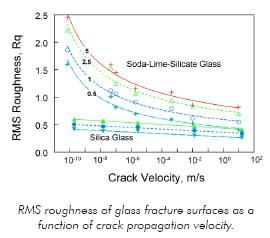Summary
Our objective is to develop atomic force microscopy-based methods to measure the structure of crack tips, the rates of crack growth, and the roughness of fracture surfaces at the nanometer scale in glasses. These measurements will enable more accurate predictions of the lifetimes of glasses used in optical, structural, and electronic components and devices, thereby enhancing the reliability of these components and devices.
Description
Our approach is to fracture glass samples under controlled conditions in order to elucidate fracture mechanisms. Specimen
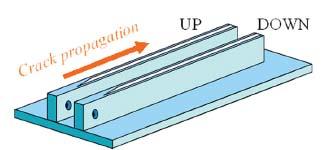
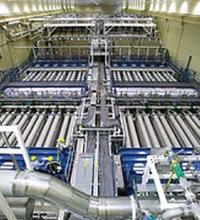
- Worldwide, more than $100B of glass is made every year as flat glass, fiber glass, container glass, and specialty glass. Glasses fail by subcritical crack growth (fatigue) from small pre-existing defects, so measurement methods are needed to evaluate crack growth processes.
- Prior NIST work on the reliability of glass was used in the design of glass for the National Ignition Facility, a $4B project at Lawrence Livermore National Laboratory.
- Prior NIST work on proof-testing was used to assure glass fiber reliability for communication applications and glass window reliability in spacecraft and aircraft.
- New applications requiring methods to assess crack growth and its effect on reliability include glass seals in fuel cells and silica glass coatings on electronic components.
Major Accomplishments
Recent work on subcritical crack growth has concentrated on determining the behavior of cracks at very slow crack growth rates using AFM. We have studied crack tips near the fatigue limit (arrested crack motion) in soda-lime silicate glasses and found that: (1) ion exchange at crack tips forms very basic solutions that corrode the crack surfaces near the crack tip; (2) ion exchange sets up compressive stresses around the crack tip that assist in retarding crack growth; and (3) despite the corrosion, the crack tips remain sharp.
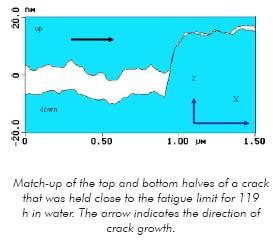
One of the common mechanisms of crack growth in metals and polymers is the formation and growth of cavities near the crack tip. Linkage of the cavities with the crack tip determines the rate-limiting step for crack growth. Recently, it has been suggested that this mechanism of crack growth also occurs in glass. In a study of crack growth at slow velocities, opposing fracture surfaces that formed during the crack growth process were compared to see if residual damage due to cavity formation could be observed on the fracture surfaces. We found that the opposing fracture surfaces matched to within 0.3 nm, suggesting that cavities did not form at crack tips in the glass.
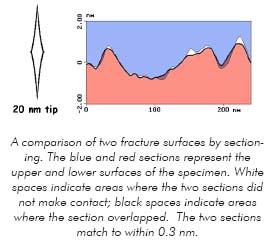
The roughness of fracture surfaces was studied as a function of crack velocity. We observed that the roughness depended on the rate of crack growth, becoming smoother as the crack accelerated. Silica glass and soda-lime silicate glass behaved very differently. The dependence of the root mean square (RMS) roughness of silica glass on crack growth rate was much smaller than that of soda-lime silicate glass. In a theory developed to explain the data, the roughness was attributed to the basic structure of the glass, and consequent local fluctuations in structure and chemical composition. Silica glass, which has a much more uniform structure than soda-lime silicate glass, is therefore much smoother. A quantitative theory developed to explain the experimental results was based on elastic interactions between the crack tip and the local fluctuations with the glass. The theory was consistent with the data. Work is underway to determine the effect of glass microstructure on RMS roughness of glass fracture surfaces.
